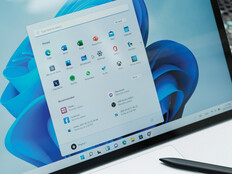Start Planning for Windows 8
The hits just keep on coming from Microsoft. Even if your organization has barely finished deploying Windows 7, it’s not too early to start planning for Windows 8, which will arrive in computers shipped before the end of the year. These five tips can help prepare your organization for the new OS.
Tip 1: Identify the benefits of Windows 8.
Build a business case by analyzing the productivity features in the new Windows Metro user interface and other Windows 8 features.
Technology research group IDC describes Windows Metro as a meshing of the tablet and PC experience. With it, users can control traditional desktop PCs and mobile devices alike with touch-screen commands that augment mouse and keyboard input. A redesigned home screen replaces the venerable Windows Start button with icons users touch to open desired applications. Of course, those not ready to make the change can still use a more traditional desktop interface.
Microsoft will support x86 processors with three Windows 8 versions: Standard, Pro and Enterprise. The Enterprise edition will include encryption and Microsoft’s Hyper-V virtualization technology. In addition, pre-release versions of Windows 8 include revisions to the ChkDsk utility and the Windows file system designed to reduce downtime when diagnosing and addressing hard-disk problems.
Tip 2: Perform an impact assessment.
Inventory existing software and hardware to identify all applications and devices affected by the upgrade, and then estimate the costs for making existing devices compatible.
The good news on this front is that Microsoft didn’t change the hardware requirements for Windows 8, so organizations that have moved to Windows 7 won’t face another refresh just to run the next operating system.
But when estimating the impact of a Windows 8 migration, don’t forget related costs, such as upgrades to core applications, time spent by IT people to perform migration tasks and training for users.
Tip 3: Align Windows 8 with your mobile roadmap.
Determine how to take advantage of the expanded support for tablets, built-in support for mobile broadband and the ability for mobile users to create virtual private network (VPN) connections.
In addition to the editions designed for x86 mobile processors, Microsoft will offer a Windows 8 version known as Windows RT (runtime) to support the Advanced RISC Machine (ARM) processors found in many tablets. This edition includes power conservation features and versions of some Microsoft Office applications tailored for touch screens.
Note that some of Windows RT’s web-oriented capabilities will be available only with Microsoft’s Internet Explorer, not with Mozilla Firefox, Google Chrome or other browsers.
Tip 4: Evaluate new security features.
Plot out how to integrate Windows 8’s security features into the organization’s existing data-protection plan.
Windows To Go, an important addition to Windows 8 Enterprise, lets IT managers pack a USB stick with an approved desktop, complete with the organization’s applications and security settings. The bootable USB drive gives IT administrators a way to securely manage resources running on “bring your own device” units.
Windows security features from earlier versions of the OS round out the offering. DirectAccess, introduced in Windows 7, enforces security policies and loads software patches when users remotely log on to the network. And with AppLocker, IT administrators can closely control which applications run on the network.
Tip 5: Find the right migration tools.
Identify tools and services that can speed migration and make the move as transparent as possible to existing operations. Start with Microsoft’s revised Application Compatibility Toolkit and the User State Migration Tool, which are designed to handle various stages of software migrations.








